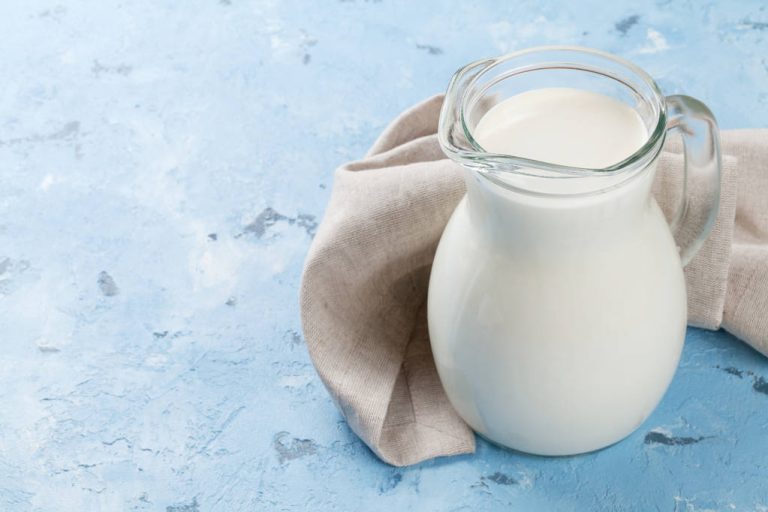Do you feel constantly hungry? Here we show you ten reasons why this can be and how you can prevent the constant feeling of hunger.
A constant feeling of hunger is not the same as cravings, i.e. short-term binge eating of unhealthy food. Constant hunger isn’t just a question of feeling hungry for particularly greasy, sweet or salty foods – even if you eat healthily, you can feel a constant hunger pang.
Feeling hungry is a positive thing. Hunger is an important signal from your body. If your body lacks energy and nutrients, the feeling of hunger sets in. This is triggered by the hormone ghrelin.
The causes of constant hunger range from poor nutrition to insulin resistance. Here we show you ten reasons why you could suffer from a constant feeling of hunger.
You eat too little

When you’re on a diet and eat very little, your body doesn’t have enough energy available. Therefore, it triggers a feeling of hunger. Too large a calorie deficit will not bring you long-term success. There is a risk that you will quickly fall into cravings. If you choose the right foods, you can eat your fill and still lose weight. You can find recipe inspiration here: Lose weight without feeling hungry: 3 healthy recipes.
You can find more information about how to lose weight effectively, healthily and sustainably here:
Important: For some people it makes sense to lose weight for health reasons. However, anyone who only loses weight to meet a beauty ideal is not always doing something good for their own body – and may suffer from a constant feeling of hunger.
Even if you do a lot of sport, your energy consumption increases. Because the more muscles you have, the more energy they need. If you then eat too little, you have to reckon with a constant feeling of hunger. If you’re not sure if you’re eating enough, you can calculate your energy needs and add more calories to your meals.
You eat unhealthily
Sugary foods and easily digestible carbohydrates such as white bread, pasta made from white flour or white rice can trigger almost addictive behavior. This is because the short-chain carbohydrates present in these foods are broken down into individual sugar molecules in a very short time. As a result, the blood sugar level rises quickly, but then falls again rapidly. The result: There is hardly any real, long-lasting feeling of hunger and you will quickly get hungry again.
On the other hand, dietary fiber from green vegetables or whole grain bread and proteins from legumes keep you full for longer.
Learn more about sugar withdrawal here: Sugar withdrawal: What effectively helps against sugar addiction.
A lack of protein in your diet also leads to constant hunger. Incorporating a large dose of protein into your meals will also keep you fuller for longer. In consideration of the environment, you should use more vegetable proteins instead of animal proteins.
You eat too fast
If you don’t give yourself enough time to eat, your brain will delay registering the energy intake. So you can’t tell while you’re eating whether your hunger pangs have been satisfied or not. As a result, you end up eating more than your body needs. As scientists at Osaka University have found, there is a connection between eating quickly and feeling full later. The study also showed that fast eaters were three times more likely to be overweight than those who didn’t eat fast.
When you eat slowly and chew thoroughly, your brain can sense satiety. This is the only way you will recognize your satisfied feeling of hunger.
You are thirsty
Sometimes hunger is confused with thirst. This is because hunger and thirst are both regulated by the hypothalamus. If you haven’t had a drink in too long and you’re already dehydrated, you may mistake hunger for thirst. So make sure you drink enough fluids regularly. If you feel hungry, drink water first.
You sleep too little
Lack of sleep affects your constant feeling of hunger. Sleeping too little can lead to a lack of the hormone leptin. Leptin ensures that a feeling of satiety occurs. Get enough sleep and at the same time ensure sufficient leptin production. This is a natural way to curb your hunger pangs. Seven to eight hours is recommended.
You take medication
Certain medications have the side effect of increasing your hunger pangs, particularly birth control pills, antidepressants, and cortisol supplements. The constant feeling of hunger goes away when you stop taking the medication. However, you should only do this after consulting a doctor and, if possible, have an alternative medication recommended to you.
You are stressed
A constant feeling of hunger can also be a side effect of permanent stress. When you are under stress, the hormone cortisol is released and your cortisol levels rise. You can find out how to lower your cortisol level here: Lower cortisol: The best tips against high cortisol levels. Cortisol ensures that the body is provided with more energy to deal with the stress that arises. When more energy is provided, the body cries out for new energy. Therefore, with constant stress, a constant feeling of hunger sets in. You get rid of the constant feeling of hunger when you lower your stress level. Conscious breaks, exercise, or spending time in nature can help you reduce stress.
Food on TV
You can see attractive photos depicting food everywhere. Whether on TV cooking shows, scrolling through your Instagram feed or in newspapers. As a study confirms, such images make us hungry. They create a virtual hunger. The more often you are confronted with such images, the more often the stimulus is triggered in your brain to want to eat these foods – regardless of whether your body really needs energy or not. This tasty representation of food is also called “food p*rn” because it makes you want to eat these foods. This creates a constant feeling of hunger in you.
You can consciously filter out and ignore such images. In addition, before you reach for food, you can always ask yourself whether you really have a need for energy, or whether you simply feel hungry because of “food p*rn” images.
You have an overactive thyroid
Constant hunger pangs can also be due to an overactive thyroid. Here the metabolism increases and thus also the energy requirement. So you have to eat more to cover the increased energy requirement and not suffer from constant hunger pangs.
If you suspect an overactive thyroid gland, go to the doctor and have yourself checked out.
Insulin resistance

Another health reason for feeling hungry all the time is insulin resistance. Here, the cells do not respond or respond only weakly to insulin, a hormone that lowers blood sugar. Therefore, the pancreas produces more insulin than necessary. Insulin signals the body to eat. This creates a constant feeling of hunger.
If you suspect insulin resistance, you should see a doctor.

















